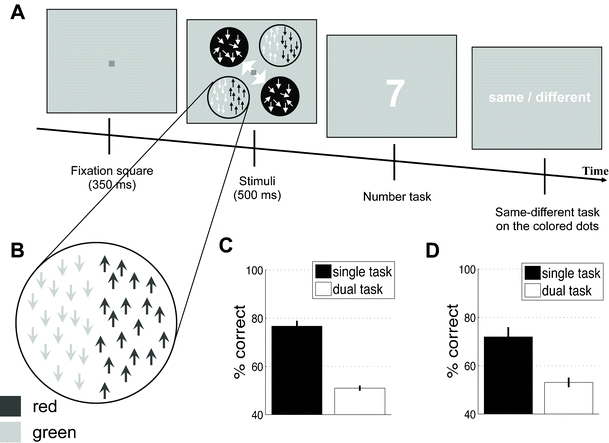Fig. 5.

Experiments 3 and 4: Task and results. (a) We used identical stimuli for Experiments 3 and 4. The task was similar to that of Experiment 2, except that the colored circles now had moving red and green dots substituted for them. (b) We have zoomed in on the stimulus presented in the uncued locations. The left half of the circle contained green or red dots that moved either up or down. The right side of the stimulus contained dots of the other color that moved in the opposite direction. Subjects needed to indicate whether or not the red dots moved in the same direction in the two uncued circles. (c) Results from Experiment 3. When performed in isolation, the same–different task on the colored dot motion was manageable for the subjects, who performed at about 78% correct (“single task” bar). However, when subjects were required to concurrently perform the number task from Experiment 1, performance dropped to chance level (“dual task” bar). (d) Results from Experiment 4. This experiment was identical to Experiment 3, except that the two tasks (see panel a) were presented in random order, such that on about half of the trials subjects were asked about the uncued stimuli first. Subjects were again good at the same–different task when they did not need to perform the number task, but dropped to chance level in the main task of the experiment. These results suggest that there was little spill of attentional resources to the uncued location during the main task of Experiment 1
